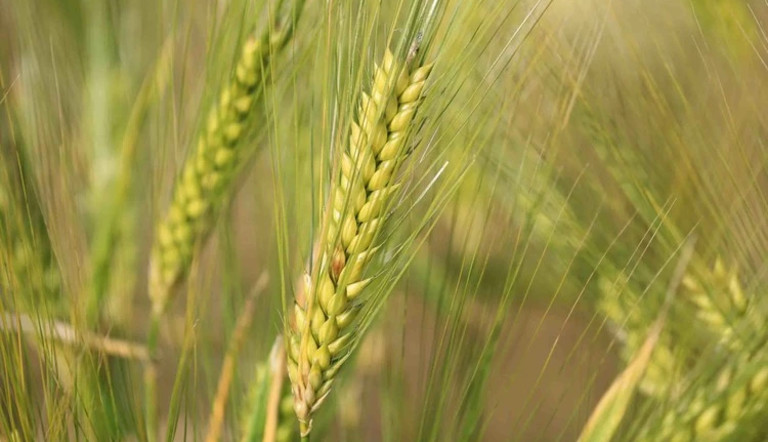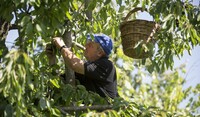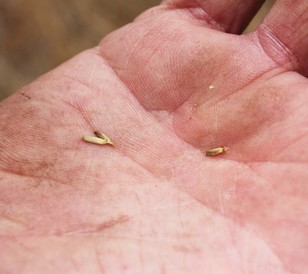
Diverse Approach To Tackle Resistant Weeds

Where do you farm?
We are cropping 4,500ha of arable at East Pingelly and East Corrigin, about 100-150km south east of Perth.
The soil at East Pingelly is a duplex sandy gravel over clay, with a pH of 4.2-4.5 and annual rainfall of 350mm. At Corrigin, soils are heavy red clay with a pH of 8.5-9 and annual rainfall of 280mm, but very variable.
Our properties have two very different soil types and rainfall patterns, which keep things interesting and requires two very different farming hats!
When did you notice herbicide resistance as a problem on the farm?
From 1983, when we bought the property at East Pingelly, until 1990, we were 50% cropping and 50% pasture for Merino sheep production. We switched to 100% cropping in 1990 on a rotation of 50% wheat and 50% lupins, but soon ran into weed problems.
We found that we could keep lupins clean, but wheat crops were getting more weeds and most notably ryegrass (Lolium ridigum). We first noticed resistance with the sulfonylureas (ALS-inhibitors) and the fops. We had been using Glean (chlorsulfuron) since it first came out, but due to high cost and it working so well, we would cut the rates and that has been a factor in resistance development.
How bad did the problem get?
At its worst and before we accepted we had a problem, we had to clean weed seeds out of some of the wheat for it to be accepted by the processor, but it hadn’t affected yield much. At the time, we would blame the chemical or the conditions at application for the chemical not working.
What was the turning point?
After taking part in an Australian Herbicide Resistance Initiative (AHRI) Ryegrass Management Workshop (RIM), I concluded that to continue in 100% arable production we needed more diversity in crop rotation and herbicide programmes. We also had to adopt harvest weed seed control (HWSC), otherwise herbicide resistant weeds would continue to increase and make grain production uneconomical.
What changes did you make?
After running into problems, we initially brought barley into the rotation and a few years later, canola. The barley initially allowed us to use higher rates of (dinitroaniline herbicide) trifluralin. In 2006, we switched to no-till knife points on the drill, which places seed in a clean strip of soil after pre-emergence application, allowing higher rates to be used without risking crop damage.
In the canola phase, we introduced stubble spraying under the swather to stop weeds setting seed after harvest. In addition, canola residue was burned during in the autumn to kill weed seeds. This was before more effective narrow windrow burning was introduced and was fairly successful, but you didn’t get a complete burn in thinner crops.
In the back of our mind, we still had to introduce HWSC into the system and once a user-friendly chaff cart had been developed, we used one for 14 years. Chaff carts catch all the chaff fraction – which contains weed seeds – and the contents are dumped for burning in the autumn. We didn’t see much difference in the first three years, but in the fourth we could see the weed numbers starting to drop, before crashing over time.
We now use an iHSD (integrated Harrington Seed Destructor) that we developed with De Bruin engineering. It uses high speed rotors to smash the weed seeds and leave them unviable. This has eliminated the need to burn chaff dumps.
What role do herbicides play now?
Herbicides continue to play a very big part, but they are now rotated around throughout our cropping system. We are now targeting newer, more expensive products where they are most needed. This adds more chemical groups into the herbicide programme and helps protect the older, more cost effective products going forward. We have also introduced Roundup (glyphosate) Ready canola for additional diversity.
We are always thinking several years ahead as to what might happen in terms of resistance and backing up the herbicides with HWSC.
What advice do you have to other farmers with herbicide-resistant weeds?
Use every tool available in the toolbox, think a few years in advance and, to quote Professor Stephen Powell, world renowned weed researcher at University of Western Australia: ‘When on a good thing, DON’T stick to it!’. We learnt the hard way…
Image Gallery
Related Articles

How the Cazado® Launch Embodies Value Innovation

From Market, For Market: How Grower Feedback Drives Innovation

